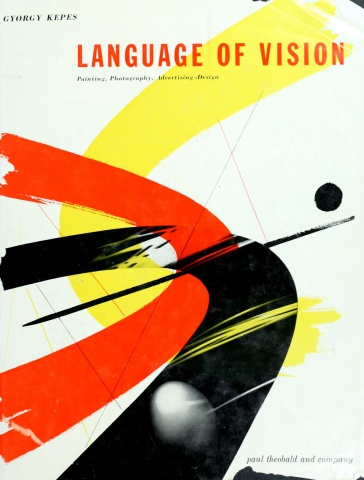Lisa Parks: Cultures in Orbit: Satellites and the Televisual (2005)
Filed under book | Tags: · archaeology, art, body, journalism, mass media, satellite, space, technology, television, vision

“In 1957 Sputnik, the world’s first man-made satellite, dazzled people as it zipped around the planet. By the beginning of the twenty-first century, more than eight thousand satellites orbited the Earth, and satellite practices such as live transmission, direct broadcasting, remote sensing, and astronomical observation had altered how we imagined ourselves in relation to others and our planet within the cosmos. In Cultures in Orbit, Lisa Parks analyzes these satellite practices and shows how they have affected meanings of “the global” and “the televisual.” Parks suggests that the convergence of broadcast, satellite, and computer technologies necessitates an expanded definition of “television,” one that encompasses practices of military monitoring and scientific observation as well as commercial entertainment and public broadcasting.
Roaming across the disciplines of media studies, geography, and science and technology studies, Parks examines uses of satellites by broadcasters, military officials, archaeologists, and astronomers. She looks at Our World, a live intercontinental television program that reached five hundred million viewers in 1967, and Imparja tv, an Aboriginal satellite TV network in Australia. Turning to satellites’ remote-sensing capabilities, she explores the U.S. military’s production of satellite images of the war in Bosnia as well as archaeologists’ use of satellites in the excavation of Cleopatra’s palace in Alexandria, Egypt. Parks’s reflections on how Western fantasies of control are implicated in the Hubble telescope’s views of outer space point to a broader concern: that while satellite uses promise a “global village,” they also cut and divide the planet in ways that extend the hegemony of the post-industrial West. In focusing on such contradictions, Parks highlights how satellites cross paths with cultural politics and social struggles.”
Publisher Duke University Press, 2005
ISBN 0822334615, 9780822334613
256 pages
Review (John Cloud, Technology and Culture, 2006)
Review (Howard Fremeth, Topia, 2006)
Review (Gerald Sim, Screening the Past, 2006)
Review (Fredessa D. Hamilton, The Communication Review, 2007)
Notes from Lisa Parks’ 2008 talk on satellite art (Regine Debatty, We Make Money Not Art)
Jonathan Crary: Techniques of the Observer: On Vision and Modernity in the Nineteenth Century (1990–) [EN, HU, TR, ES, BR-PT, CN]
Filed under book | Tags: · 1800s, art, art history, body, camera obscura, image, knowledge, optics, painting, perception, perspective, representation, science, space, vision

“In Techniques of the Observer Jonathan Crary provides a dramatically new perspective on the visual culture of the nineteenth century, reassessing problems of both visual modernism and social modernity.
Inverting conventional approaches, Crary considers the problem of visuality not through the study of art works and images, but by analyzing the historical construction of the observer. He insists that the problems of vision are inseparable from the operation of social power and examines how, beginning in the 1820s, the observer became the site of new discourses and practices that situated vision within the body as a physiological event. Alongside the sudden appearance of physiological optics, Crary points out, theories and models of “subjective vision” were developed that gave the observer a new autonomy and productivity while simultaneously allowing new forms of control and standardization of vision.
Crary examines a range of diverse work in philosophy, in the empirical sciences, and in the elements of an emerging mass visual culture. He discusses at length the significance of optical apparatuses such as the stereoscope and of precinematic devices, detailing how they were the product of new physiological knowledge. He also shows how these forms of mass culture, usually labeled as “realist,” were in fact based on abstract models of vision, and he suggests that mimetic or perspectival notions of vision and representation were initially abandoned in the first half of the nineteenth century within a variety of powerful institutions and discourses, well before the modernist painting of the 1870s and 1880s.”
Publisher MIT Press, Dec 1990
October Books series
ISBN 0262031698
171 pages
Publisher (EN)
Techniques of the Observer: On Vision and Modernity in the Nineteenth Century (English, 1990, 21 MB, updated on 2015-2-18)
A megfigyelő módszerei. Látás és modernitás a 19. században (Hungarian, trans. Ágnes Lukács, 1999, no OCR)
Gözlemcinin Teknikleri. On Dokuzuncu Yüzyılda Görme ve Modernite (Turkish, trans. Elif Daldeniz, 2002/2004, added on 2024-3-3)
Las técnicas del observador: visión y modernidad en el siglo XIX (Spanish, trans. Fernando López García, 2008)
Técnicas do observador: visão e modernidade no século XIX (BR-Portuguese, trans. Verrah Chamma, 2012, added on 2024-3-3)
Guan cha zhe de ji shu / 观察者的技术 (Chinese, 2017, added on 2024-3-3)
Gyorgy Kepes: Language of Vision: Painting, Photography, Advertising-Design (1944–) [EN, ES, DE]
Filed under book | Tags: · advertising, art, art theory, bauhaus, colour, design, light, painting, perception, photography, vision

Noted painter, designer, theoretician Gyorgy Kepes analyzes the effect of visual language on the structure of human consciousness, in particular how the elements of line and form are perceived and how innovative types of perspective can lead to more dynamic representations in art. Over 300 photographs, drawings and illustrations.
With introductory essays by Siegfried Giedion and Samuel Ichiye Hayakawa
First published in 1944
Publisher Paul Theobald, Chicago, 1969
228 pages
Commentary: Ellen Lupton and J. Abbott Miller (1999), Leigh Anne Roach (Ph.D. dissertation, 2010).
Language of Vision (English, 1944/1969, 33 MB, no OCR)
El Lenguaje de la visión (Spanish, trans. Enrique L. Revol, 1969, added on 2017-6-21 via Valericke)
Sprache des Sehens (German, trans. Renate Pfriem and Almut v. Wulffen, 1971, 20 MB, added on 2019-12-3 via ARCH)

